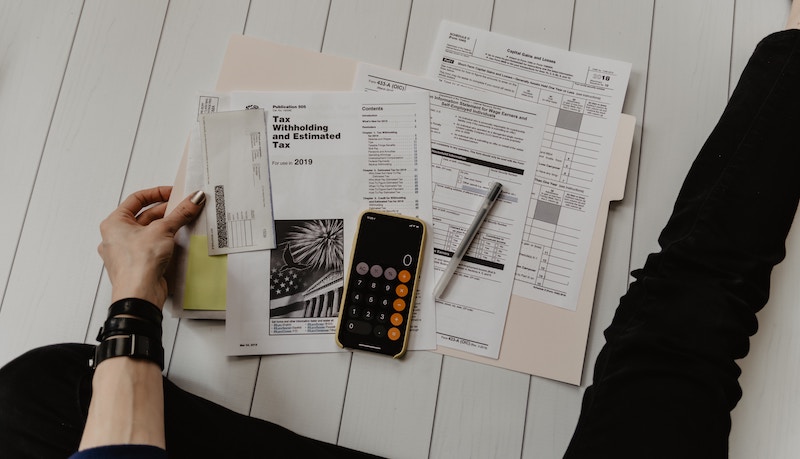What is a 60-Day Indirect Rollover?
A 60-day indirect rollover occurs when an IRA or retirement plan distribution is paid directly to you and you re-deposit some or all of the distribution back into an IRA or retirement plan within 60 days.
Here are the rules:
- The funds must be deposited back into an IRA within 60 calendar days from the date you receive the distribution.
- You can only make one 60-day indirect rollover per year. Example: if you make a 60-day indirect rollover in May of 2023, you must wait until May of 2024 before you can do another one.
- To avoid taxation, you must return the gross amount of the distribution. If taxes were withheld, you will need to use other funds to make up for the amount withheld or be subject to income tax and possibly penalties on that amount.
How do I report an Indirect Rollover on my tax return?
You will receive a 1099-R from the financial institution. Quite often, for various reasons, they are not aware that you returned the funds. Your 1099-R may show a taxable amount in box 2a and a distribution code in box 7 of “1” (Early distribution, no known exception), “2” (Early distribution, exception applies), or “7” (Normal distribution).
If you returned the funds within the 60-day deadline, you will report the rollover as a nontaxable rollover. Please consult your tax advisor for proper filing instructions.
What happens if I miss the 60-day deadline?
Generally, if you miss the 60-day deadline, you cannot deposit the funds back into an IRA and the full amount of the distribution will be taxed. You also will incur a 10% penalty if you are under the age of 59 ½. In some cases, you may obtain a waiver of the 60-day rule.
There are three ways to obtain a waiver of the 60-day indirect rollover rule:
- You may qualify for an automatic waiver.
- You self-certify that you meet the requirements for a waiver and the IRS agrees through an audit of your return.
- You may request a private letter ruling granting a waiver.
How do I qualify for an automatic waiver?
You qualify for an automatic waiver if all of the following apply:
- The financial institution receives the funds on your behalf before the end of the 60-day rollover period.
- You followed all of the procedures set by the financial institution for depositing the funds into an IRA or other eligible retirement plan within the 60-day rollover period (including giving instructions to deposit the funds into a plan or IRA).
- The funds are not deposited into a plan or IRA within the 60-day rollover period solely because of an error on the part of the financial institution.
- The funds are deposited into a plan or IRA within 1 year from the beginning of the 60-day rollover period.
- It would have been a valid rollover if the financial institution had deposited the funds as instructed.[i]
If you qualify for the automatic waiver, keep all documentation with your tax documents. There is no need to send any letter or explanation to the IRS with your tax return. When you file your tax return, you will treat the distribution as a rollover.
How to I qualify for using the self-certification procedure?
If you do not qualify for an automatic waiver, you may qualify for the self-certification procedure. You would complete a “Model Letter” and submit the letter to the financial institution receiving the late indirect rollover contribution. Keep in mind, some financial institutions may not accept your letter and late contribution.
In the Model Letter, you must be able to assert one of the following reasons for missing the 60-day deadline:
(a) an error was committed by the financial institution receiving the contribution or making the distribution to which the contribution relates;
(b) the distribution, having been made in the form of a check, was misplaced and never cashed;
(c) the distribution was deposited into and remained in an account that the taxpayer mistakenly thought was an eligible retirement plan;
(d) the taxpayer’s principal residence was severely damaged;
(e) a member of the taxpayer’s family died;
(f) the taxpayer or a member of the taxpayer’s family was seriously ill;
(g) the taxpayer was incarcerated;
(h) restrictions were imposed by a foreign country;
(i) a postal error occurred;
(j) the distribution was made on account of a levy under § 6331 and the proceeds of the levy have been returned to the taxpayer; or
(k) the party making the distribution to which the rollover relates delayed providing information that the receiving plan or IRA required to complete the rollover despite the taxpayer’s reasonable efforts to obtain the information.[ii]
There are additional rules for self-certification. Please contact your tax advisor if you think you may qualify for self-certification.
How do I apply for a waiver using a Private Letter Ruling?
You may request a private letter ruling, but it is costly, takes time to complete the process, and there are no guarantees of success. There is a $10,000 fee that must accompany every request for a waiver of the 60-day indirect rollover requirement. If you are interested in learning more, please contact your tax advisor for details.
EXAMPLES:
Example #1:
David is 38 years old and takes a $50,000 distribution from his IRA on August 25, 2023. The custodian automatically withheld the mandatory 20% ($10,000) for Federal income tax.
On October 2, 2023, David contributed the full $50,000 back to his IRA. He will report this as a rollover and the $10,000 that was withheld will be applied to his tax liability or be refunded to him when he files his 2023 tax return.
Example #2:
Using the same information from example #1; David contributed $30,000 back to his IRA on October 2, 2023. David will pay ordinary income tax as well as the 10% early withdrawal penalty on the $20,000 he did not return to his IRA.





